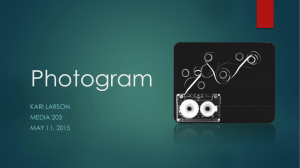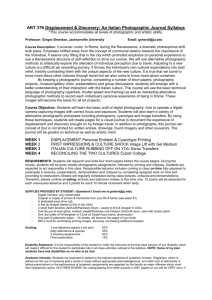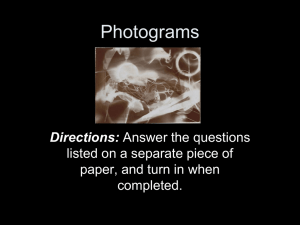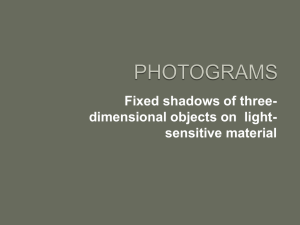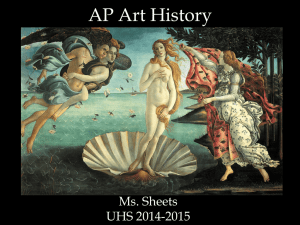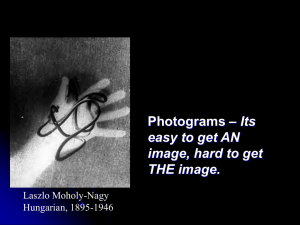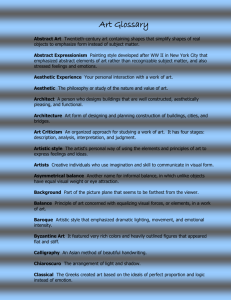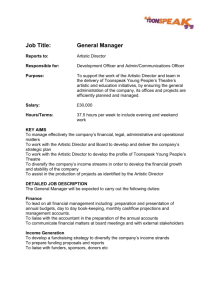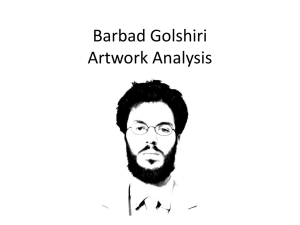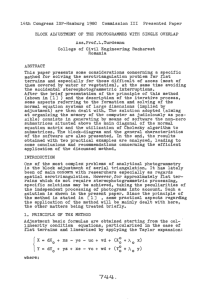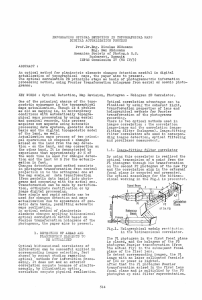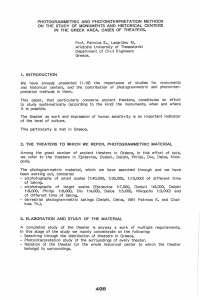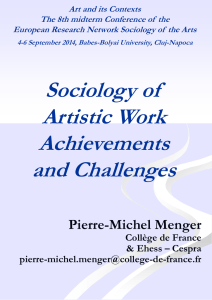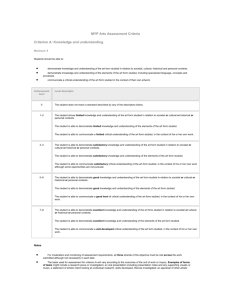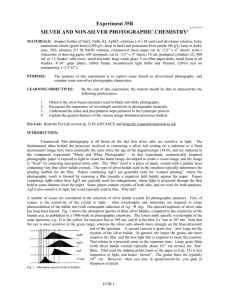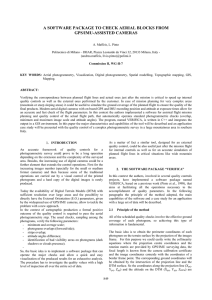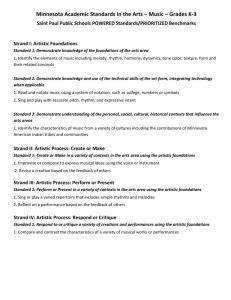photograms
advertisement
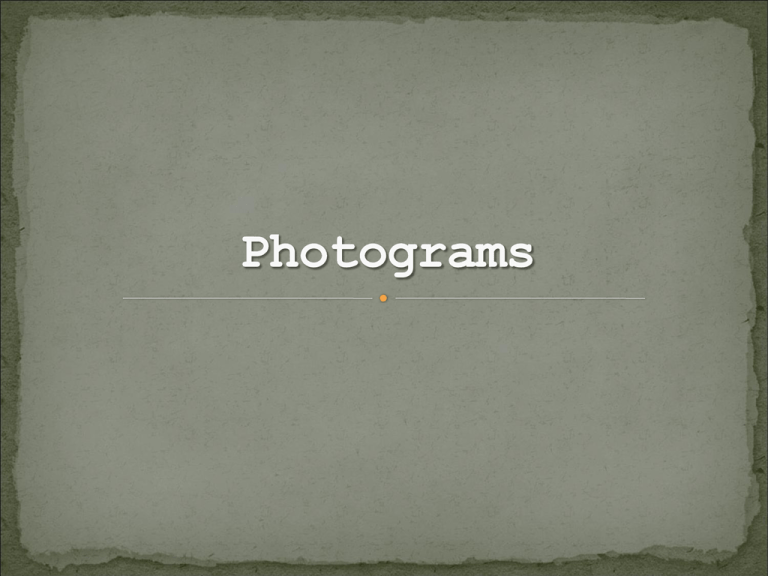
Definition: A photogram is a photographic image made without a camera by placing objects directly onto the surface of a photosensitive material such as photographic paper and then exposing it to light. The result is a negative shadow image varying in tone, depending on the transparency of the objects used. Areas of the paper that have received no light appear white; those exposed through transparent or semi-transparent objects appear grey. Photograms have come through three phases in history: 1. Phase 1: To record the shapes sizes of natural objects 2. Phase 2: As an artistic expression 3. Phase 3: Contemporary art Phase 1: To Record The first period of “photogram” exploration was to gain scientific record of natural objects . Anna Atkins was working at the very dawn of photographic development. Her work can be seen below: British Algae: Cyanotype Impression, 1843 Poppies: Cyanotype Impression, 1850 Phase 2: Artistic Expression The second period was a rediscovery of the artistic potential as illustrated by Christian Schad, Man Ray and Lazlo MoholyNagy in the Dada, Surrealist and Constructivist periods of art. Christian Schad, “Schadograph” 1918 Laszlo Moholy-Nagy, “Self Portrait”, 1926 Man Ray, “No Title (comb, knife and needle)” 1922 Phase 3: Contemporary re-discovery More recently, photogramists have utilized the photogram as a means of artistic expression to produce a wide variety of designs and surreal imagery. Artist such as Adam Fuss and Susan Derges use the very basic science to create some complex artist works: Susan Derges takes camera less photography to the limit. She uses nature to create her images. Working with rivers, coasts and sound waves. To the right: “Shoreline 5”, 1998 “River Bovey May 07” 2007 Adam Fuss, “Untitled”, 1994. Fuss deals with themes such as Life, death, motion and experiment. Summery: You have seen a lot of examples of how photograms have been and are still being used. It is a simple way of recording objects textures and shapes. Just because it is simple, doesn’t mean it has to be Dull! Consider the following: • Transparency: Solid objects create a different effect to glass for example • Shape: How about creating your own shapes out of materials to enhance the image...? • Composition: A key factor of any art work. Try to make it visually interesting. Thin about where to lay the objects. Practice this before your Exposure. Suggested materials: Cut card (shapes), tissue paper, newspaper, bubble wrap, glass, flowers, liquid in jars, things in jars, yourself, soil, gravel, transparency sheets with writing or sketches....the limits are endless!
